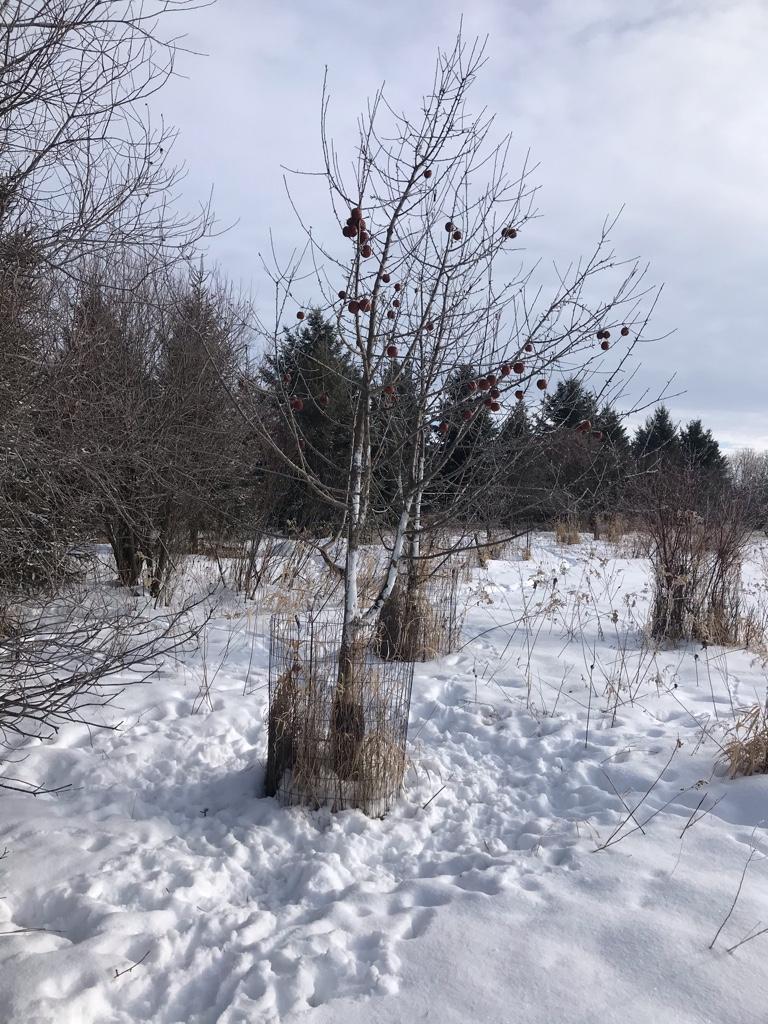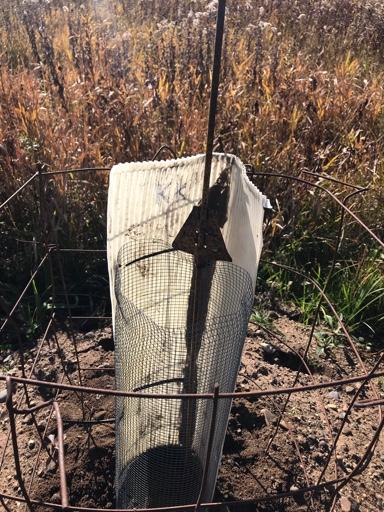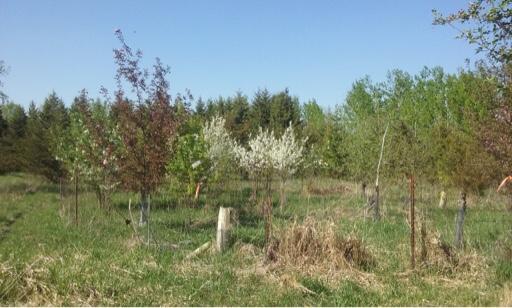Chainsaw
5 year old buck +
Planted 600 apple seeds December 18 2019 directly into the soil in an amended flower bed. Additionally on the next day planted 63 apple seeds in one gallon water jugs using Miracle Gro seed starting potting mix as the soil medium. Watered the seeds in and put the jugs outside in the snow bank as a test hoping for a high and even germination rate in early spring. And then yesterday on January 29, 2020 another 663 apple seeds were planted; ground was snow covered and unworkable so all 663 seeds were planted into water jugs, watered and put out in the snow bank. All of the planted 1326 apple seeds came from our Turning Point Apple tree. Turning Point is just a simple wild apple tree that we call by that name. It is special to the deer here and thus is special to us. The pollinator parents of the planted seeds though unknown were likely multiple wild apple trees growing near Turning Point. We shall find out which of the two seed planting methods (if any)works the best come around May 15.
Today’s apple tree related activity begins the wire cutting to make cages in preparation for our spring planting of bare rootstock apple trees that have been ordered for delivery here this spring. Thanks to the many examples of how to cage trees from everyone here, that learning curve can be jumped over. Cages are also being cut for some pear trees, lilac trees, forsythia bushes, and sumac seedlings. However this thread will be about apples, apples and more apples.
With there being very minor snow here this year the deer are active day and night now and old Turning point is getting lots of visitors. This group of young deer raced in, each trying to be first. The mother casually ambled in after; the old doe stands up on two legs to reach apples so there is no need for her to race to the tree. Trail cam pic. taken two days ago on January 28, 2020.

The apple projects started here around 1989; And nothing except for resetting the forest areas back to an earlier succession stage has come close to delivering benefits to the deer living here than the apple related projects have. The mission for this Apple project which is really in its infant stages is to establish 19 major apple tree thickets on this property each made up of various apple trees that combined provide a steady drop of apples from November 15 through March.
Today’s apple tree related activity begins the wire cutting to make cages in preparation for our spring planting of bare rootstock apple trees that have been ordered for delivery here this spring. Thanks to the many examples of how to cage trees from everyone here, that learning curve can be jumped over. Cages are also being cut for some pear trees, lilac trees, forsythia bushes, and sumac seedlings. However this thread will be about apples, apples and more apples.
With there being very minor snow here this year the deer are active day and night now and old Turning point is getting lots of visitors. This group of young deer raced in, each trying to be first. The mother casually ambled in after; the old doe stands up on two legs to reach apples so there is no need for her to race to the tree. Trail cam pic. taken two days ago on January 28, 2020.

The apple projects started here around 1989; And nothing except for resetting the forest areas back to an earlier succession stage has come close to delivering benefits to the deer living here than the apple related projects have. The mission for this Apple project which is really in its infant stages is to establish 19 major apple tree thickets on this property each made up of various apple trees that combined provide a steady drop of apples from November 15 through March.







